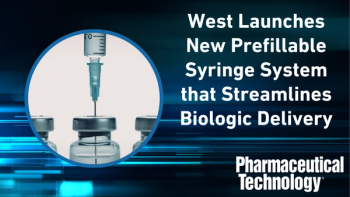
Equipment and Processing Report
- Equipment and Processing Report-08-20-2008
- Volume 0
- Issue 0
After Formaldehyde: Comparing Alternative Decontaminants
Decontaminating pharmaceutical manufacturing facilities is essential for producing safe and pure drugs. The most commonly used decontaminant in the industry has been sublimated formaldehyde.
Decontaminating pharmaceutical manufacturing facilities is essential for producing safe and pure drugs. The most commonly used decontaminant in the industry has been sublimated formaldehyde. In June 2004, however, the International Agency for Research on Cancer classified formaldehyde as carcinogenic to humans. The US and most world health organizations now recognize formaldehyde as a carcinogen or a possible carcinogen for humans. Although some companies still use formaldehyde, the pharmaceutical industry is looking for alternative decontaminants.
Chlorine dioxide and vapor-phase hydrogen peroxide (VPHP) have emerged as popular replacements for formaldehyde gas. These decontaminants share several characteristics. Both compounds can be used in an automated decontamination process, and a process using either agent can be validated easily. Neither chlorine dioxide nor VPHP leaves a residue or causes cancer. But is one agent superior to the other?
Mark Czarneski, director of technology at ClorDiSys Solutions (Lebanon, NJ), says chlorine dioxide “offers the most thorough decontamination possible in the safest manner.” Chlorine dioxide is a gas at room temperature, thus it achieves comprehensive distribution and good surface coverage throughout a room. Because chlorine dioxide gas is a small molecule, it penetrates into small areas.
Another benefit of chlorine dioxide is its fast aeration time. Aeration removes a decontaminant from a room. Czarneski explains that 15 air exchanges bring the amount of gas in an area below the 8-h safety level set by the Occupational Safety and Health Administration. Fast aeration time results in a fast overall cycle time, which also enhances safety. Operators can decontaminate isolators in as little as 1.3 h, and rooms in 3.5 h. These characteristics make chlorine dioxide “an excellent decontamination agent, independent of external factors,” Czarneski adds.
Adam Warner, east coast sales manager for BIOQUELL (Horsham, PA), indicates that VPHP has certain advantages over chlorine dioxide. For example, VPHP can be used at a wide humidity range, but chlorine dioxide gas must be kept at a relative humidity of at least 70% to be effective. Also, containment is not a significant concern in VPHP decontamination, as it is for chlorine dioxide. It’s sufficient for personnel to seal entry and egress points with tape during VPHP contamination, but far more precautions must be taken to prevent chlorine dioxide gas from leaking from a room.
Warner also argues that VPHP is safer than chlorine dioxide. Unlike chlorine dioxide, VPHP breaks down without a catalyst. Its byproducts are water and oxygen, which are innocuous. In addition, he observes that the National Institute for Occupational Safety and Health set an 8-h exposure limit of 0.1 ppm for chlorine dioxide. In contrast, the 8-h limit for VPHP is 1 ppm. Furthermore, the level at which chlorine dioxide is considered immediately dangerous to life and health is 5 ppm, but that level is 75 ppm for VPHP.
VPHP decontamination has a long cycle time, however, which may lessen the safety advantage of the compound’s higher exposure limits. Often a room must be aerated overnight to remove the VPHP, Czarneski says. The aeration step accounts for the decontaminant’s long cycle time.
The nature of vapors themselves poses problems for VPHP decontamination, including poor penetration. Also, Czarneski explains that “hydrogen peroxide’s normal state at room temperature is a liquid, so it will always condense out,” which limits its distribution. A dry process of VPHP decontamination reduces condensation and thus offers better distribution. But the dry process “can only reduce the condensation and not eliminate it,” according to Czarneski.
An important similarity between the two compounds is that Steris’s (Mentor, OH) dry VPHP and ClorDiSys’s chlorine-dioxide processes are both registered as sterilants by the Environmental Protection Agency. This designation means both agents provide the maximum kill and are considered to be highly sporicidal under stringent test conditions.
Chlorine dioxide and VPHP have different requirements, strengths, and weaknesses as decontaminants. But their designation as sterilants shows that the two compounds have equivalent efficacy. It is not clear that one agent is superior to the other, and a pharmaceutical manufacturer’s choice may be determined by preference.
Articles in this issue
over 17 years ago
How to Be Green in a CGMP-Regulated Environmentover 17 years ago
August 2008 Editor's Picks: Products from OYSTAR Manesty and HawkNewsletter
Get the essential updates shaping the future of pharma manufacturing and compliance—subscribe today to Pharmaceutical Technology and never miss a breakthrough.




